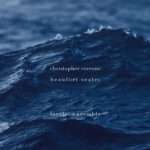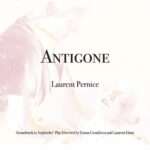
CHRISTOPHER CERRONE – BEAUFORT SCALES
The Beaufort Scale, devised in 1805 by Francis Beaufort, relates wind speed to observed conditions at sea or on land. It is a 13-part scale of increasing intensity. Experiencing wind is strongly subjective – ‘one man’s stiff breeze might be another’s soft breeze‘ – which is why describing the conditions by sea or land conditions is helpful. For example: Beaufort 0 is described as ‘sea like a mirror’ and ‘smoke rises vertically’. Beaufort 12 (the heaviest storm imaginable) as ‘the air is filled with foam and spray; sea is completely white with driving spray; visibility very seriously affected’ and with the much shorter land condition ‘devastation’. (Full descriptions on the Wikipedia page).
The different descriptions of wind forces read like a poem. This inspired composer Christopher Cerrone (1984, New York) to compose Beaufort Scales, a composition for (female) choir and electronics, ‘transforming the steps of the scale into 13 corresponding movements of escalating musical intensity’.
“As the work proceeds and the weather becomes more violent, I use different forms of electronic processing—granulation, downsampling, pitch shifting—to distort the voices.”
Between the steps, there are also four spoken interludes, with wind-related texts from The Great Gatsby, Moby Dick, The Anthology Of Water, and the King James Bible. At these moments, you can regain your breath somewhat, because – even if this composition is no longer than 35 minutes – it gets more and more intense as it progresses. Which can of course be expected when following the Beaufort Scale from 0 to 12.
But even the strongest storm eventually subsides: tranquillity returns in the Postlude: “It will be fair weather, for the sky is red (Matthew (16:2)”.
LAURENT PERNICE – ANTIGONE
Quite a few scores are written for old (silent) movies, but Laurent Pernice goes further back in time, presenting his score for Sophocles’ Antigone, a play written in 441 BC! This score was written for the play as performed by Anima Motrix, directed by Emma Gustafsso and Laurent Hatat.
Antigone cannot easily be summarised so I simply refer to the Wikipedia page for convenience. Pernice‘s score tells the story in just one hour, in 20 relatively short tracks filled with all kinds of emotions.
Laurent Pernice is no stranger to music: Antigone is his 20th album! For a previous Anima Matrix production (Foucault’s Le Corps Utopique) he focused on wind instruments from all over the world, but this time it’s strings. Pernice plays bass, double bass, zither, and harp, but there’s an important role for Violaine Sultan – a teacher at the Marseille Conservatory of Music, on viola. The acoustic performances are subtly altered by Pernice‘s electronic treatments: ‘the sound of [Sultan’s] instrument, while sometimes very clear and simple, interpreting melodies of a elegant beauty akin to that of classical music, is often turned on its head, slowed down, overdriven, to create textures conducive to the atmosphere of this or that part of the play’.
Obviously the soundtrack score will have extra impact when you have seen the performance, but it definitely speaks for itself too, even without the text of the original play. The music itself ‘takes you on a journey of an absolute tragedy, while revealing the infinite complexity of the human being’.
Please note that the Bandcamp page only presents the digital download and refers to the ADN Records (Alma De Nieto) website for a CD version – but I couldn’t find out how to order the CD from this site, so you may want to check SoundOhm if you want a physical copy.




‘Beaufort Scales’ will be featured in Bijdetijds, the contemporary music show on Concertzender Nederland on Monday, June 17 19:00 CEST.
https://www.concertzender.nl/programma/contemporary_music_770621/